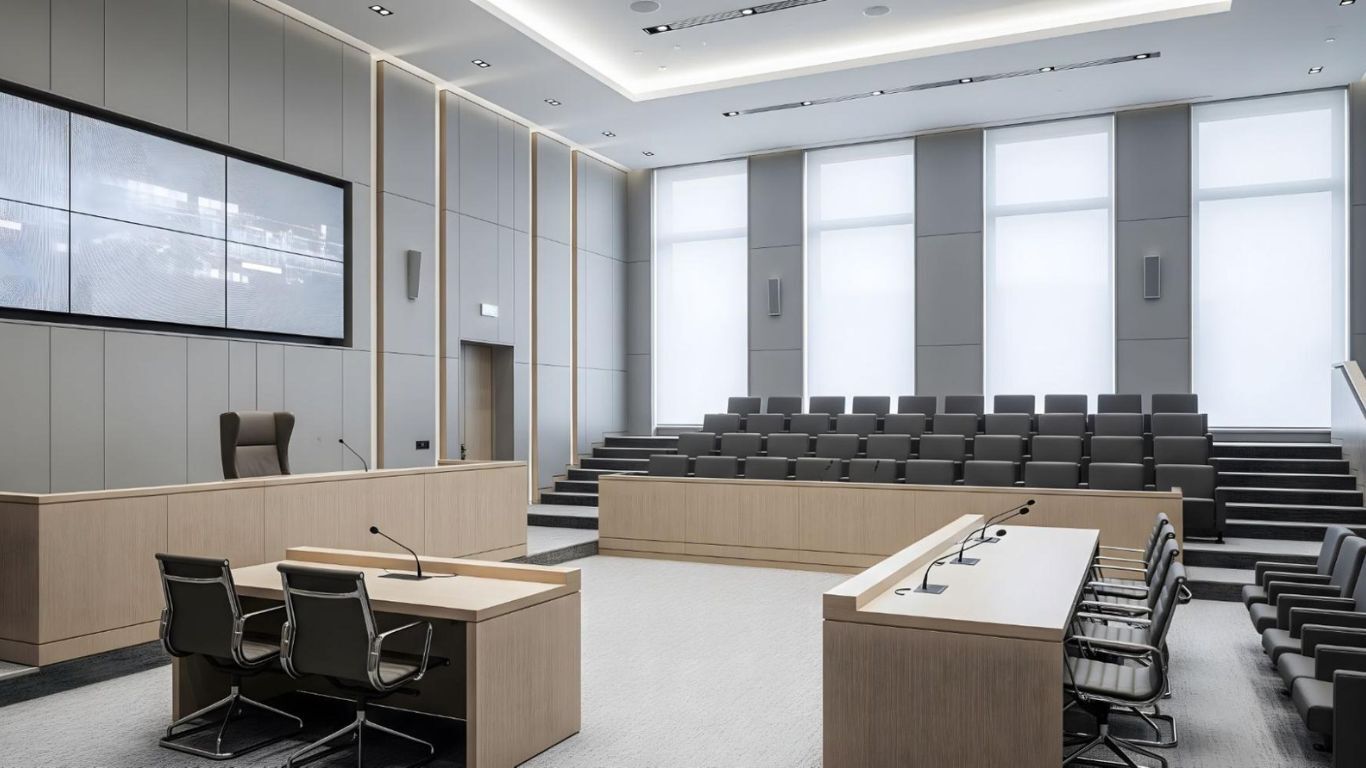Designing a courthouse is more than just selecting materials and layouts — it’s about shaping the physical framework of justice itself. Every square foot in a courthouse carries weight (and a significant cost if we’re being honest): it must support fairness, uphold security, ensure accessibility, and represent the dignity of the judicial process. But before the renderings and blueprints, there’s a critical question that demands an answer:
How much space do we actually need?
That’s where a Courthouse Space Calculator comes in. By utilizing established design standards and functional benchmarks, this tool enables planners, architects, and public officials to determine the optimal amount and type of space required for a courthouse project. In this blog, we’ll explore how to build such a calculator, what inputs to consider, and how design standards can transform planning from guesswork into a data-driven foundation for justice.
Whether you're designing a local courthouse renovation or planning a new judicial complex from scratch, this tool will help you turn high-level goals into actionable square footage with precision, purpose, and transparency.
For the past 20 years, I have been involved as a programmer and court’s consultant in planning, developing, and coding space calculators. The tools, which began as simple spreadsheets, have evolved to web-based apps with cloud-based databases and multiuser functionality.
Let’s break it down.
What Is a Courthouse Space Calculator?
At first glance, developing a courthouse space calculator might seem like a straightforward task: gather the right numbers, apply design standards, and calculate a reliable estimate. But in practice, building a tool of this kind is far more complex. Behind its simplicity lies a set of nuanced challenges that require careful attention to detail, deep knowledge of courthouses and the judiciary process, and a collaborative approach across disciplines.
One of the most immediate hurdles is the diversity of court types and their operational needs. Courthouses aren’t uniform; they may handle criminal, civil, family, juvenile, or appellate cases each with distinct spatial and workflow requirements. Designing a calculator that is flexible enough to accommodate this diversity without becoming too complex for users is a delicate balancing act. In my experience, flexibility means allowing the user to make certain space elements inactive if they don’t apply to their court functions and allowing for manual changes to square footage requirements throughout the entire tool.
Gaining buy-in from stakeholders is just as important as technical accuracy. Judges, architects, planners, security staff, and funding authorities often have different goals and perspectives. A space calculator must reflect a consensus on assumptions and outputs to become a trusted resource across these groups.
Which leads me to the biggest challenge of all: the actual formulas behind the space calculator. Design Guides are a great place to start, but despite best intentions, Design Guides do not always provide crystal clear answers when it comes to space requirements. Spaces are often shown as having a minimum and maximum value for space (for example, min 300 sq ft and max 400 sq ft for a conference room). The challenge and calculator formulas is to determine which courthouses get the minimum and which get the maximum. And, how to specify that through the logic of programming a tool in Excel or online.
If that isn’t complicated enough, don’t even get me started on the countless hours I have spent calculating the correct number of toilets in a courthouse!
The saying that I have heard many times is that workload leads to people and people lead to space needs. Being able to come up with the formulas that turn people into space is a challenge and also a key piece in developing a useful and accurate space calculator.
Finally, the technical development and long-term maintenance of the calculator require their own planning. Building the tool involves careful programming, user experience design, iterative testing, and frequent updates especially as design standards and courthouse needs evolve. Securing the right development team and allocating resources for ongoing support are essential to ensure the calculator remains accurate, relevant, and effective over time.
The Benefits of a Courthouse Calculator
One of the key advantages of a courthouse calculator is its ability to provide an objective and consistent interpretation of space needs. Without such a tool, each design team often develops its own list of requirements for every project, essentially “reinventing the wheel” time and again.
By using a calculator, thousands of hours can be saved across a portfolio with multiple courthouse projects. The process is simple: plug in staffing levels and other parameters, and the calculator produces a detailed list of required spaces. Rather than starting from scratch, the design team and courts have a solid foundation that can then be tailored to each court’s specific operations.
Another major benefit is cost savings through standardization. Courthouse amenities can be appealing, but they sometimes drift into extravagance—fitness centers that rival commercial gyms, grand atriums that require scaffolding just to change a light bulb, lavish judicial lounges lined with marble, or rooftop gardens with sweeping city views. While impressive, these features come at a price.
If a courthouse calculator had been used in such projects, it’s unlikely that these costly features would have been included. That not only saves money, but also ensures fairness. Every courthouse should have the space it needs to function effectively, but no single facility should be opulent while another is struggling to meet basic operational requirements.
In short, courthouse calculators save time through efficiency, save money through standardization, and promote fairness across an entire portfolio of projects.
Conclusion
Developing a courthouse space calculator is more than a technical task and is certainly not always a straightforward process, but it is a commitment to designing facilities that uphold the mission of the courts and is a step that should never be overlooked for a portfolio.
As demands on the judicial system grow and evolve, tools like the courthouse space calculator will play a crucial role in translating vision into reality, aligning aspiration with execution, and supporting justice not only in principle but in practice.
After all, you’re talking about millions of dollars, sometimes tens of millions of dollars, when planning courthouse renovations or new construction. Every square foot doesn’t just count, it costs money!



.jpg)

.jpg)
.jpg)
.jpg)
.jpg)

.jpg)


.jpg)
.jpg)

